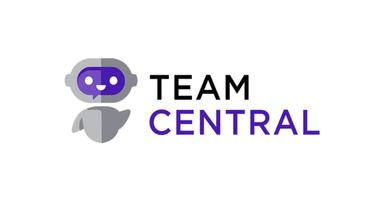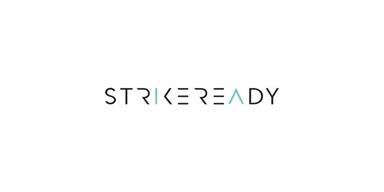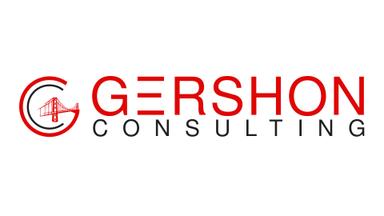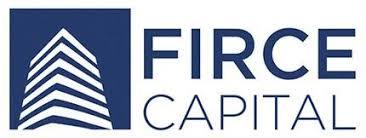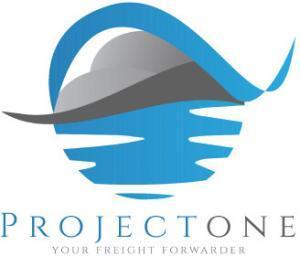Optimum Retailing: Paving the Way towards a New Era of Retail
20 Fastest Growing Companies to work in 2021
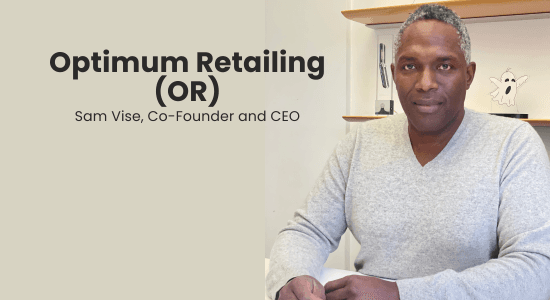
Optimum Retailing has been recognized as one of the 20 Fastest Growing Companies to Work in 2021 by The Executive Headlines
Some businesses have grown significantly in recent years and weathered the pandemic well, while others have struggled in the face of recent challenges. In looking at those that have thrived, several elements are responsible for the success of large commercial enterprises, and one of the most significant is the adoption of business technology.
Business technologies such as Artificial Intelligence (AI) and Machine Learning (ML) advancement have resulted in the exponential success of industry leaders. These technologies have simplified everyday operations for large organizations, leading to streamlined processes and a strengthened bottom line.
Optimum Retailing (OR) is one company that has made its mark by offering such disruptive and leading edge digital solutions to its clients. Situated in Toronto and NYC, the company is led by its Co-Founder and CEO, Sam Vise.
Below are the highlights of our interview with Sam.
Tell me about the history of Optimum Retailing and what sets your company apart from competitors.
Our team has been pushing the boundaries of brick-and-mortar retail technology for almost 30 years, and the inspiration to create OR– and its predecessor Retail Management Software (RMS) – came from watching the rapid evolution of the retail industry and the power of technology to help retailers optimize their operations within that evolution.
It is amazing to look back at where we have been and where we’re going. We’re currently laser-focused on leveraging AI and automation for our brick-and-mortar clients, which is proving to be a game-changer in helping them gain visibility into their stores, optimize their operations, and gain a competitive edge. Our platform started out as a solution for retailers relying on outdated processes such as Excel to capture store-specific information and execute at the local level, and now OR is an industry leader in harnessing the power of AI to strengthen store performance using its custom-made platform.
You mention AI which we’re seeing as a driver of transformation in several industries. What role is AI playing right now in the retail industry and how is OR using it?
AI, ML, and computer vision are all new automation tools starting to be used by companies across a vast number of industries. The possibilities with these technologies are rapidly expanding, and AI and ML automation are now driving a fundamental shift in the retail industry - from facilitating the personalization of the customer experience, to the optimization of retail stores, to driving conversion rates.
One of our platform features that is garnering a significant amount of interest from clients is the Automated Photo Compliance (APC) feature, which uses ML, AI, and computer vision to automatically identify and execute planograms by simply pointing a phone at a fixture. Now employees and merchandisers simply hold up their smartphone to a fixture and, through computer vision and analysis, AI does the work in ensuring stores are compliant. Where in the past brick-and-mortar retailers focused on providing stores with planograms and hoping that the stores execute properly, with the APC platform, the focus has shifted to realograms – gaining visibility in what is actually executed, with AI comparing it to the planogram. This pass or fail system is fully automated and occurs in real-time.
It is easy to see how far-reaching the benefits of ML, AI, and computer vision can be – APC alone saves management time as it removes the need to manually review thousands of photos while making employees’ jobs easier, strengthening brand consistency, and elevating the in-store experience. APC is providing retail leaders with visibility, operational efficiencies, and resource efficiencies, and the role it will play in brick-and-mortar retail will only continue to grow.
In what other ways do your clients benefit from using OR’s custom-made and data-driven software?
Our clients’ focus is on recovering from the pandemic and navigating through our new reality. Since the pandemic hit, we have seen that retail leaders are really prioritizing revenue drivers and cost efficiencies as they look to the path ahead now. The financial benefits our clients experience are significant and are realized quite quickly. For example, even prior to the pandemic, our clients would see an average increase in traffic of between 25-30%, average top-line growth of 10%, and average bottom-line improvements of 30% - all within the first 12-18 months. We are passionate about ensuring the brick-and-mortar industry thrives, and it is rewarding to be able to help retailers realize those cost-saving and efficiencies at such a critical time.
In addition to those financial benefits, we help brick and mortar retailers plan more intelligently, which benefits store performance and customer engagement – both of which are more critical than ever as they recover from a difficult year and a half. The power of its platform is rooted in building store-specific profiles using advanced tools to collect and analyze multiple sources of data, allowing us to gain AI-driven behavioral-based insights into each store. Those local insights allow our clients to localize and personalize products, messages, and campaigns, which in turn drive traffic and conversion rates. We also work closely with our clients to optimize their retail operations through Workforce Management and SKU Optimization tools, improved automation, and enhanced store management that strengthen and optimize go-to-market efficiencies. All of those things are helping our clients plan more intelligently, engage consumers, and drive down costs.
Do you feel that your focus on AI has helped drive your success and reputation?
In looking at where we are at with incorporating ML, AI, and computer vision with APC for our clients compared to our competitors, I certainly think that has played a role in our success over the last few years. Our team is constantly innovating and pushing to be one step ahead of competitors and one step ahead of what brick-and-mortar retailers need. That drive to constantly innovate means we are using AI to drive retail success in ways that our competitors are not. Our clients are seeing immediate benefits to their store operations and performance as a result.
In addition to the strength of our technology, I think our success is also driven by our focus on relationships and improving the way teams work together. From the beginning, our platform has been rooted in strengthening communication and relationships between HQ and stores.
Virtually all of our clients have seen an increase in revenue due to the enhanced communication and visibility that comes with the platform, including increased store compliance with APC, cost savings from one-click planograms that allow users to see the graphics and merchandise each store needs, and improved communication between stores, area managers, and headquarters. We believe that by improving the way teams collaborate and work together, we can elevate retail performance.
How has the pandemic changed things for your company and for your clients?
So much has changed for retailers and consumers since the pandemic hit. Before COVID, some brands still managed retail somewhat ad-hoc, with operations at the store level relatively consistent from store to store. Even then, the retailers that focused on localizing their marketing/merchandising and operations had a competitive advantage. But in a post-COVID world, understanding and leveraging local data and information has become critical as brands figure out how to offer customers an engaging shopping experience. For retailers trying to navigate the path ahead, taking advantage of our AI-driven features gives our clients a competitive advantage, which is paramount right now.
The drop in consumer
spending experienced because of the pandemic – coupled with new investments required to meet health and safety guidelines – have led to retailers prioritizing revenue drivers and cost efficiencies in a way we have not seen before. Since March 2020 we have seen a 25% increase in sales due to interest in OR from retailers across virtually every industry including QSR, CPG, banking, and telcos who are looking to strengthen their bottom line and find cost savings and efficiencies at the store or branch level, including reducing non-sellable hours.
The brick-and-mortar industry has faced a number of challenges in recent years with growing pressure from e-commerce and shifting customers preferences. What does the future of the brick-and-mortar industry look like?
The brick-and-mortar industry has undoubtedly experienced rapid transformation in recent years, but what we have seen is that those retailers who have adapted, innovated, and taken advantage of today’s technology within that industry transformation have survived and thrived.
Despite an initial pandemic-driven hit to the sector and a rise in e-commerce sales, physical stores are bouncing back. E-commerce experienced a growing percentage of total sales (excluding restaurants, motor vehicles, and gasoline sales) at 19.6% in 2019, up from 9.6% in 2009, and up to a pandemic high of 25.5% in April 2020.
Yet, e-commerce sales have retreated over the last ten months and have begun going back to pre-pandemic levels. In December 2020, e-commerce sales had already dipped back to 21.3%, and the e-commerce share of sales is now only 2.0 percentage points above its trend since 2014. The brick-and-mortar retail industry remains strong and will continue to get stronger as we recover from the impact of the pandemic.
Where do you see Optimum Retailing in the next 3-5 years?
Our approach has always been not to reinvent the wheel, but to make the wheel more efficient to the benefit of our clients. My favorite book is The Innovator's Dilemma: When New Technologies Cause Great Firms to Fail by Clayton M. Christensen, where he looks at why great firms fail as new technologies displace them, such as BlackBerry vs Apple iPhone, and My Space vs Facebook.
That book is a reminder to me every day that the business OR has must be earned and we must constantly innovate and work hard to give our customers what they want at a fair price, while anticipating their future needs. I attribute OR’s rapid growth to that focus on innovation, and we will continue to innovate and anticipate the evolving needs of brick-and-mortar retailers in a way that allows them to truly stay ahead in the retail industry and connect with customers by optimizing their retail operations.
An innovative Leader in the Retail Space
Optimum Retailing (OR) co-founder and CEO Sam Vise has spent the last 25 years working with executives from many of the world’s best-known retail brands, agencies, and technology companies, and over that time has developed unparalleled expertise in connecting insights, corporate analysis, and consumer behavior.
Sam has long been recognized as an innovative leader and driving force in the brick-and-mortar retail space, and his role in leveraging AI, automation, and other technologies to help retailers navigate through challenges brought on by the pandemic has led to significant growth for OR as retailers look for ways to find cost and operational efficiencies while increasing revenue. Sam’s vision for the future, his ability to anticipate retailers’ needs, and the company’s industry-leading focus on harnessing the power of AI to help clients succeed have set the company apart from its competitors and made it one of the 20 Fastest Growing Companies to Watch in 2021.
Business News
Splat App Transforms Photos Into Coloring Pages Using AI
U.S. Tech Giants Warn Visa-Holding Employees to Avoid International Travel Due to Processing Delays
Bring Your Own Device: Meaning and Financial Advantages
Making Weather Programmable: How Retrospective Climate Data Fits into Modern Tech Stacks
How Fashionphile Founder Built a Luxury Resale Empire from eBay to Millions





